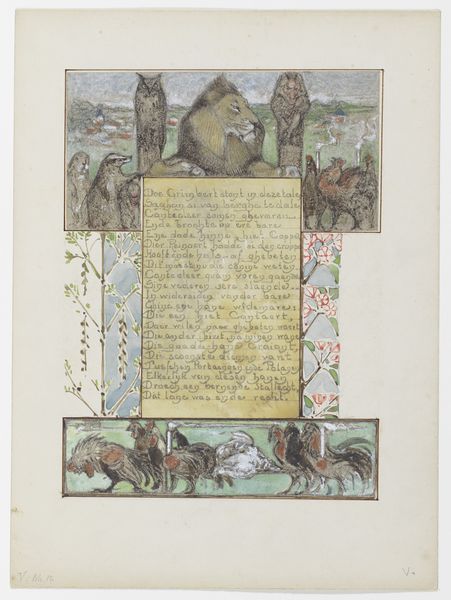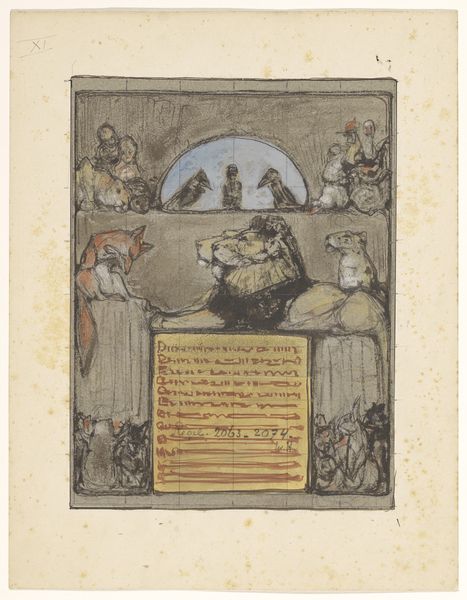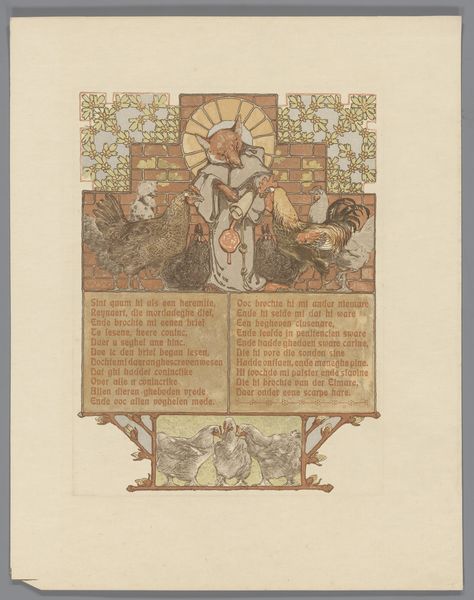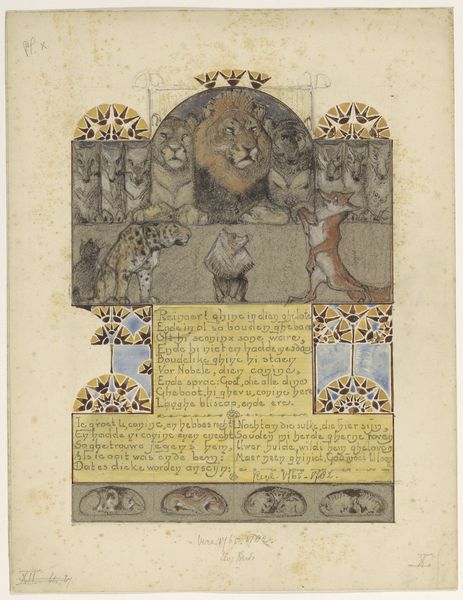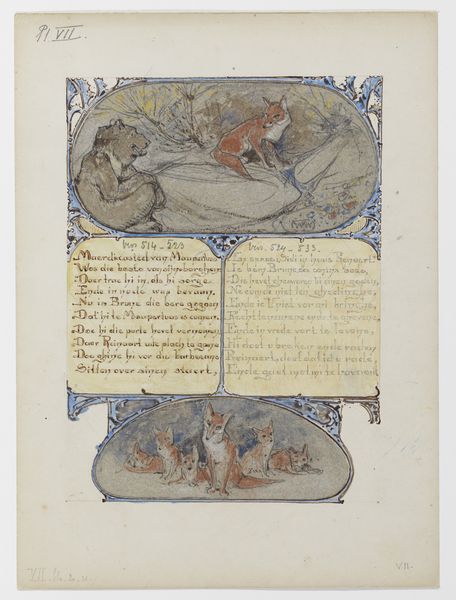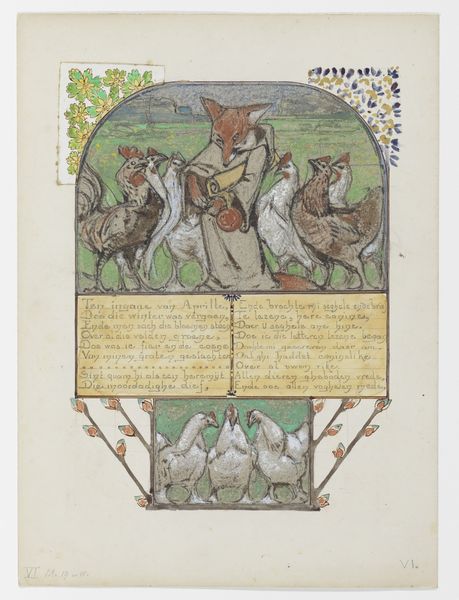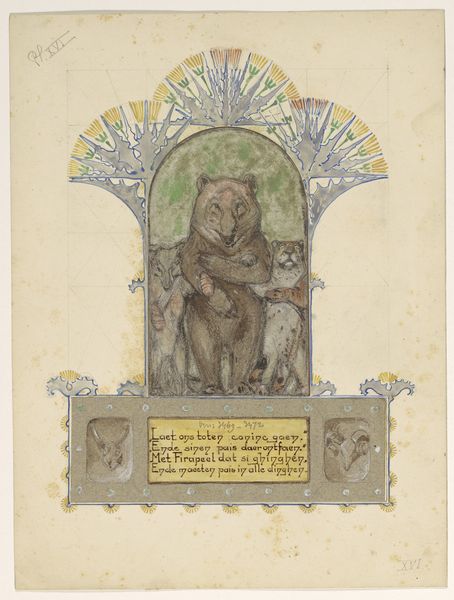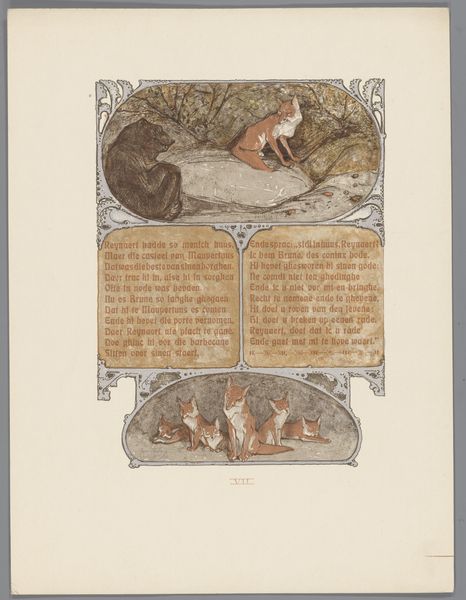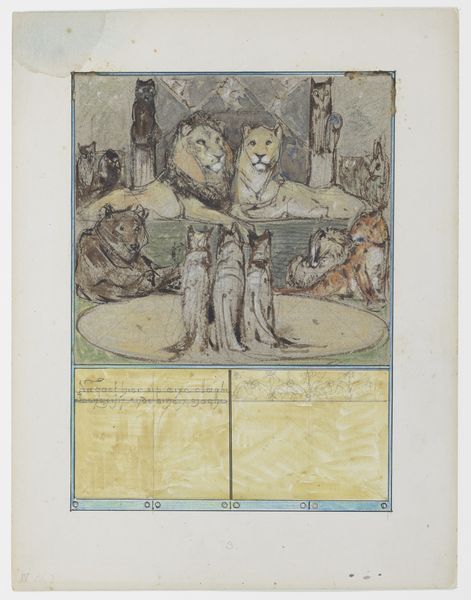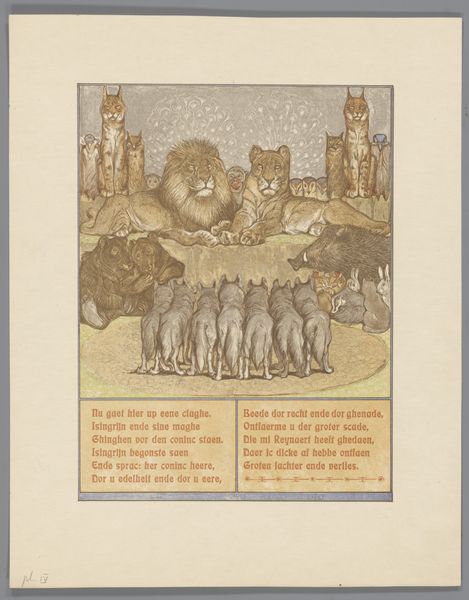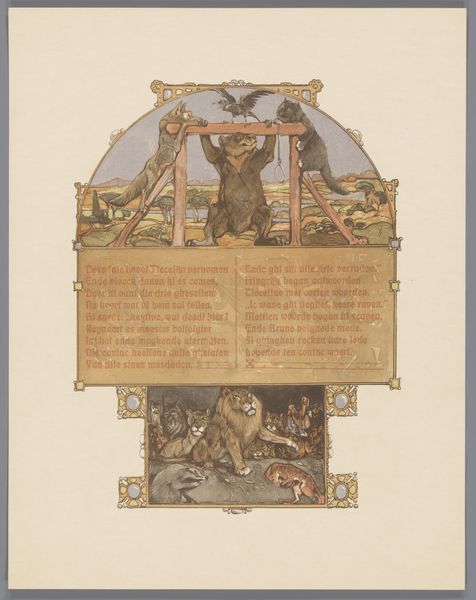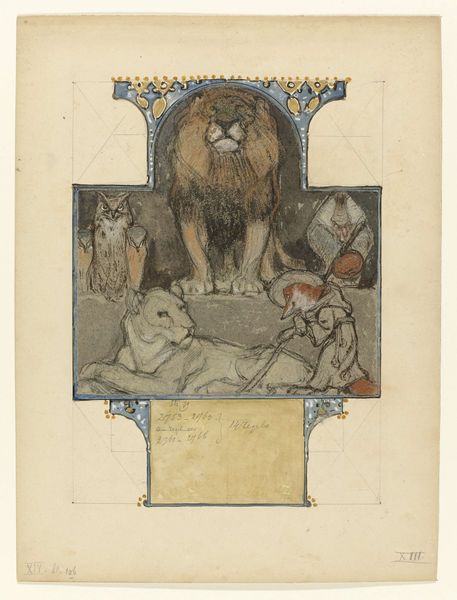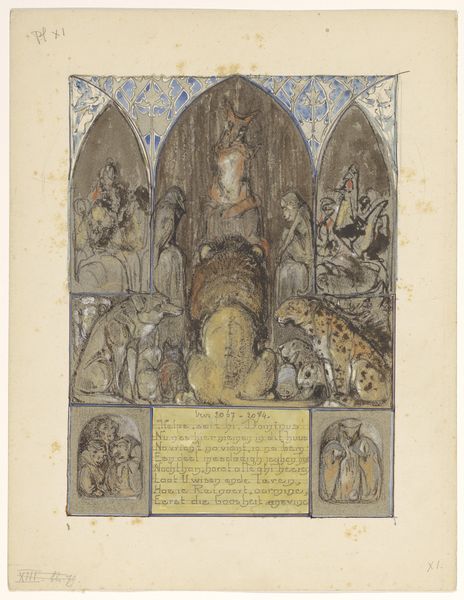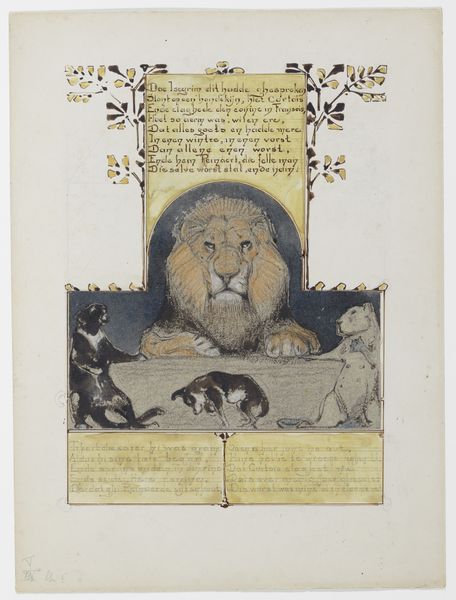
Vos (Reinaert) voor leeuw (Nobel) en andere dieren in tribunaal 1910
0:00
0:00
drawing, coloured-pencil
#
drawing
#
coloured-pencil
#
water colours
#
narrative-art
#
coloured pencil
#
folk-art
#
watercolour illustration
Dimensions: height 351 mm, width 276 mm
Copyright: Rijks Museum: Open Domain
Editor: This is "Vos (Reinaert) voor leeuw (Nobel) en andere dieren in tribunaal" by Bernard Willem Wierink, created around 1910. It's a drawing with coloured pencil, and I’m struck by how much it resembles a page out of an old illuminated manuscript. What stories do you think this imagery is trying to tell? Curator: The power of the image, even in our modern world, relies on inherited symbols and their ability to evoke collective understanding, wouldn't you agree? This piece immediately brings to mind the medieval beast fables, stories where animals take on human characteristics to satirize society. What animals do you see? Editor: Well, there’s the fox, seemingly on trial before a lion, surrounded by what look like rabbits, a badger, and various birds. It feels like a courtroom scene, a bit absurd but also... poignant? Curator: Precisely. Consider the fox, a traditional symbol of cunning and deceit, standing before the lion, representing power and justice. Wierink is pulling from a long line of visual and literary tradition, using these animal archetypes to comment on human flaws and social structures. What do you make of the text in the image? Editor: I didn't notice it at first! It's in old Dutch. Perhaps it contains part of the narrative or dialogue of the fable? Is the story very well-known in the Netherlands? Curator: That text is central. It speaks to a collective cultural memory. Many Dutch people reading it in the Rijksmuseum would feel an immediate connection, recognizing a fragment of a familiar narrative, perhaps learned in childhood. Think about that emotional connection between the work and its cultural audience, triggered by a seemingly simple image. It shows how deeply embedded certain symbols are in the culture, what would you say? Editor: So, it’s not just about the individual animals, but their historical and cultural associations? That completely reframes my perspective. Curator: It’s about unlocking those associations and seeing the deeper layers of meaning, layers built over centuries of storytelling.
Comments
No comments
Be the first to comment and join the conversation on the ultimate creative platform.
